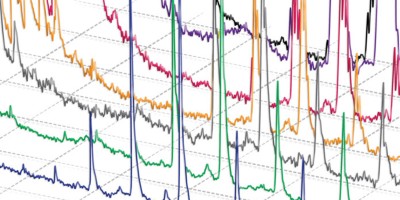Abstract
Here we report a simple and cheap one-step affinity purification protocol for isolating RNAs or proteins that interact with selected functional RNAs. The streptomycin-binding aptamer, termed 'StreptoTag,' is embedded in or fused to either end of any RNA of interest. The resulting hybrid RNA can then be immobilized on a streptomycin affinity matrix. When a complex protein mixture or total cellular lysate is applied to the matrix, subsequent elution with free streptomycin allows efficient recovery of specific ribonucleoprotein or RNA-RNA complexes. The method was successfully used to purify yeast and phage RNA-binding proteins and group II intron, viral and bacterial noncoding RNA (ncRNA)-binding proteins. The selective enrichment of bacterial mRNAs that bind ncRNAs has also been demonstrated. Once the affinity matrix, the RNA construct and the protein extracts have been prepared, the experimental procedure can be performed in 1–2 h.

Similar content being viewed by others
References
Wallace, S.T. & Schroeder, R. In vitro selection and characterization of streptomycin-binding RNAs: recognition discrimination between antibiotics. RNA 4, 112–123 (1998).
Bachler, M., Schroeder, R. & von Ahsen, U. StreptoTag: a novel method for the isolation of RNA-binding proteins. RNA 5, 1509–1516 (1999).
Bock-Taferner, P. & Wank, H. GAPDH enhances group II intron splicing in vitro. Biol. Chem. 385, 615–621 (2004).
Dangerfield, J. A., Windbichler, N., Salmons, B., Gunzburg, W.H. & Schroeder, R. Enhancement of the StreptoTag method for isolation of endogenously expressed proteins with complex RNA binding targets. Electrophoresis 27, 1874–1877 (2006).
Tereshko, V., Skripkin, E. & Patel, D.J. Encapsulating streptomycin within a small 40-mer RNA. Chem. Biol. 10, 175–87 (2003).
Srisawat, C. & Engelke, D.R. RNA affinity tags for purification of RNAs and ribonucleoprotein complexes. Methods 26, 156–161 (2002).
Hartmuth, K. et al. Protein composition of human prespliceosomes isolated by a tobramycin affinity-selection method. Proc. Natl. Acad. Sci. USA 99, 16719–16724 (2002).
Hartmuth, K., Vornlocher, H.P. & Luhrmann, R. Tobramycin affinity tag purification of spliceosomes. Methods Mol. Biol. 257, 47–64 (2004).
Shevchenko, A., Wilm, M., Vorm, O. & Mann, M. Mass spectrometric sequencing of proteins silver-stained polyacrylamide gels. Anal. Chem. 68, 850–858 (1996).
Acknowledgements
Work in our laboratory is funded by the Austrian Science fund projects Z-72 and F1703, by the European Community BACRNA FP6-018618 and by the Austrian BMBWK Gen AU programme.
Author information
Authors and Affiliations
Corresponding author
Ethics declarations
Competing interests
The authors declare no competing financial interests.
Rights and permissions
About this article
Cite this article
Windbichler, N., Schroeder, R. Isolation of specific RNA-binding proteins using the streptomycin-binding RNA aptamer. Nat Protoc 1, 637–640 (2006). https://doi.org/10.1038/nprot.2006.95
Published:
Issue Date:
DOI: https://doi.org/10.1038/nprot.2006.95
- Springer Nature Limited
This article is cited by
-
Systematic discovery of structural elements governing stability of mammalian messenger RNAs
Nature (2012)
-
A cis-antisense RNA acts in trans in Staphylococcus aureus to control translation of a human cytolytic peptide
Nature Structural & Molecular Biology (2012)





